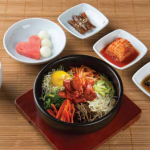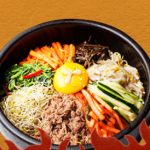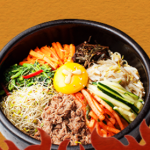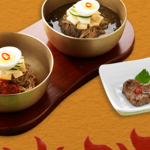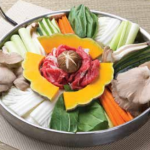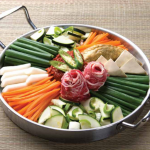Are you ready to embark on a gastronomic journey through the vibrant and flavorful world of Korean cuisine? Look no further! In this article, we will delve into the cooking techniques and methods used to prepare the delectable traditional dishes that have captivated the taste buds of food enthusiasts worldwide. From savory soups to sizzling barbecue, let’s explore the secrets behind these mouthwatering creations.
Introduction to Korean Culinary Delights
Korean cuisine, known for its emphasis on fresh ingredients and bold flavors, has gained international acclaim in recent years. The cooking techniques employed in Korean cooking are deeply rooted in tradition and carry a rich cultural heritage.
Braising: Simmering for Flavors That Melt in Your Mouth
One of the cornerstone cooking techniques in Korean cuisine is braising. By slowly simmering ingredients in a savory liquid, flavors meld together, resulting in tender, succulent dishes. A classic Korean braised dish is Galbijjim, which showcases marinated beef short ribs cooked with an assortment of vegetables. The slow cooking process allows the meat to absorb the flavors, creating a melt-in-your-mouth sensation.
Stir-Frying: Quick and Flavorful
Stir-frying is a popular method used to create vibrant Korean dishes bursting with flavor. High heat and a spicy sauce are key elements in this technique. One iconic Korean stir-fry dish is Japchae, a savory combination of glass noodles, vegetables, and thinly sliced beef. The ingredients are cooked rapidly in a hot pan, preserving their vibrant colors and crisp textures.
Fermentation: The Magic of Kimchi
No discussion on Korean cuisine would be complete without mentioning fermentation, the age-old traditional method of food preservation. Kimchi, Korea’s most famous and beloved side dish, is made by lacto-fermentation of vegetables, primarily cabbage and radishes. This process not only enhances the shelf life of the ingredients but also infuses them with a tangy, umami-rich flavor profile.
Steaming: A Healthy Delight
Steaming is a healthy cooking technique frequently used in Korean cuisine to retain the natural flavors and nutrients of ingredients. Steamed dishes like Mandu (Korean dumplings) are prepared by enclosing a savory filling in thin, delicate wrappers, and then allowing them to steam until cooked to perfection. The result is a light, nutritious dish that showcases the ingredients’ original essence.
Grilling: The Art of K-BBQ
Korean barbecue, or K-BBQ, has taken the world by storm, tantalizing taste buds with its sizzling meat and enticing aromas. Grilling is a prevalent technique used to cook meat, such as bulgogi (marinated beef) or samgyeopsal (pork belly). The meat is typically marinated beforehand, allowing the flavors to penetrate deeply. Whether you prefer an open grill or a tabletop grill, the experience of cooking your own meat at the table is undoubtedly a memorable one.
Conclusion: Unleash Your Inner Korean Chef
Korean cuisine offers a vast array of mouthwatering dishes that have become global favorites. From the meticulous art of braising to the tantalizing aromas of grilled meats, each cooking technique plays a crucial role in creating the unforgettable flavors that define this cuisine. So, don your apron, gather the finest ingredients, and let the secrets of Korean cooking take you on a culinary adventure like no other.
Frequently Asked Questions (FAQs)
- What is the primary cooking technique used in Korean cuisine?
-
The primary cooking technique often used in Korean cuisine is braising. This slow cooking method allows flavors to meld together and results in tender, flavorful dishes.
-
How is Kimchi made?
-
Kimchi is made through the process of lacto-fermentation. Vegetables, usually cabbage and radishes, are brined with a mixture of seasonings and left to ferment for a period, resulting in a tangy and pungent side dish.
-
Which cooking technique is ideal for preserving the original flavors of ingredients?
-
Steaming is a cooking technique commonly used in Korean cuisine to retain the natural flavors and nutrients of ingredients while keeping the dish light and healthy.
-
What is the highlight of Korean barbecue?
-
Korean barbecue, or K-BBQ, is famous for the grilling technique. Marinated meat, such as bulgogi or samgyeopsal, is grilled to perfection, allowing the flavors to infuse and creating a unique dining experience.
-
Can you provide an example of a popular stir-fry dish in Korean cuisine?
- Japchae, a delicious dish made with glass noodles, vegetables, and beef, is a beloved Korean stir-fry dish that showcases the quick and flavorful cooking technique.
Now that you’ve acquired knowledge about the cooking techniques used to prepare delectable Korean dishes, it’s time to embark on your own culinary adventure. Discover the flavors, explore the ingredients, and try your hand at recreating the magic of traditional Korean cuisine in your own kitchen. Happy cooking!


